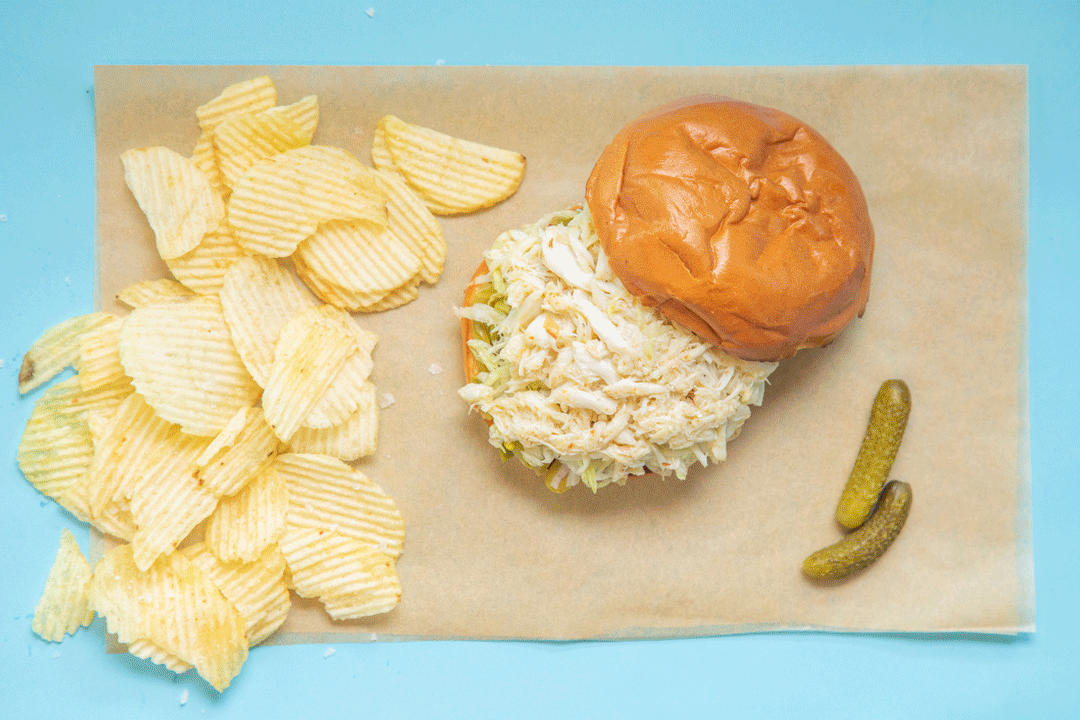RESTAURANTS : Talkin’ Up the Crabs
- Share via
Pop psychologists are fond of advising followers that they’ll never actualize their full potential unless they break out of their shells. But don’t tell that to a crab. Without its shell, a crab is weak and vulnerable--a victim. No longer a hardened, impenetrable warrior of the sea, it is reduced to spending a frightening 24 hours hiding in fear from predators that, under normal circumstances, could be crushed with a pinch of a claw or simply ignored.
Yet a crab without its shell is the most delicious crab of all. Each summer, East Coast crabbers have their hands full keeping America’s (and increasingly, Japan’s) best restaurants, sushi bars, Cajun spots and purveyors of the new eclectic cuisine supplied with the delicate crustaceans that hungry diners love to eat whole.
There is no separate soft-shell crab species; the creatures we eat are the popular Atlantic (or Gulf) blue crab without a shell. Shedding its exo-skeleton, or shell, is the only way a crab can grow. After the old shell is off, a newer, bigger shell forms. But it’s all a very trying process for the crab.
“I’ve watched those things do their stuff and it’s fascinating,” says Jon Rowley of Seattle’s Fish Works. “It takes about 30 minutes for one to back out of the shell and then it sort of lifts itself up.”
Because a crab’s shell starts growing back almost immediately, the crab should be caught before, not during, its shedding. But it’s not easy to tell when a crab is ready to bust out of its shell. It takes the experienced eye of a good waterman or, in the case of female crabs, the aroused libido of a male crab.
“Jimmies,” or mature male crabs, become especially interested in “sooks” (sexually mature females) who are about to shed their shells; it is the only time crabs can mate. It’s also a dangerous time for them since crabbers are always on the lookout for pairs of love-struck crabs in the act--such “hard doublers” (a hard-shelled male and a female “peeler”) are considered a prize catch.
The Handy Crab Co. in Crisfield, Md., said to be the largest soft-shell crab company in the country, supplies much of California. According to Handy’s president, Carol Haltman, demand started increasing here around 1983. “We’d go to seafood shows (in California) five years ago,” Haltman says, “and people would come by asking, ‘You mean you eat the whole thing?’ They come looking for us now.”
Soft-shell crab is all the more desirable because it is only available fresh from May to September. Demand has been so high that Handy and other companies have begun selling them frozen. “The crabs are so soft and squishy to begin with,” Fish Work’s Rowley says, “that freezing doesn’t do much to the texture.”
Kevin McCurdy of San Francisco’s California Crayfish, which supplies soft-shell crabs to several San Francisco restaurants, including Zuni, Masa’s, Stars and Rosalie’s, disagrees--even what is considered fresh isn’t good enough for him. “Most people bring them in dead,” he says. “Fresh, but dead.” He insists that his fish come--alive--from the Chesapeake Bay area, even though soft-shell crab are caught as far south as the Gulf of Mexico. “It’s too hot in the Gulf,” he says. “The fishermen are better in the north and the crab are stronger--not mushed out.”
Size is also important to McCurdy. (Soft-shells are sold in five sizes: whales, jumbos, primes, hotels, and mediums.) Most in the industry say that the size of a crab doesn’t affect the taste, though mediums are rarely used because they are so small they tend to fall apart during shipping. Handy’s president, Haltman, does acknowledge that there are regional preferences: “Connecticut, Philadelphia and Atlantic City all like big crabs,” she says. “Chicago and Japan like them smaller.” But McCurty prefers primes and hotels solely because of taste. Why? “Smaller is better,” he says. “The big ones are tough and have too many guts.”
More to Read
Sign up for The Wild
We’ll help you find the best places to hike, bike and run, as well as the perfect silent spots for meditation and yoga.
You may occasionally receive promotional content from the Los Angeles Times.







